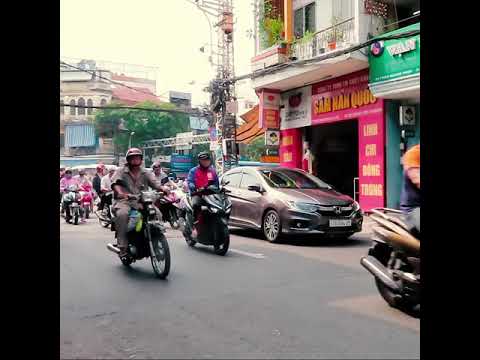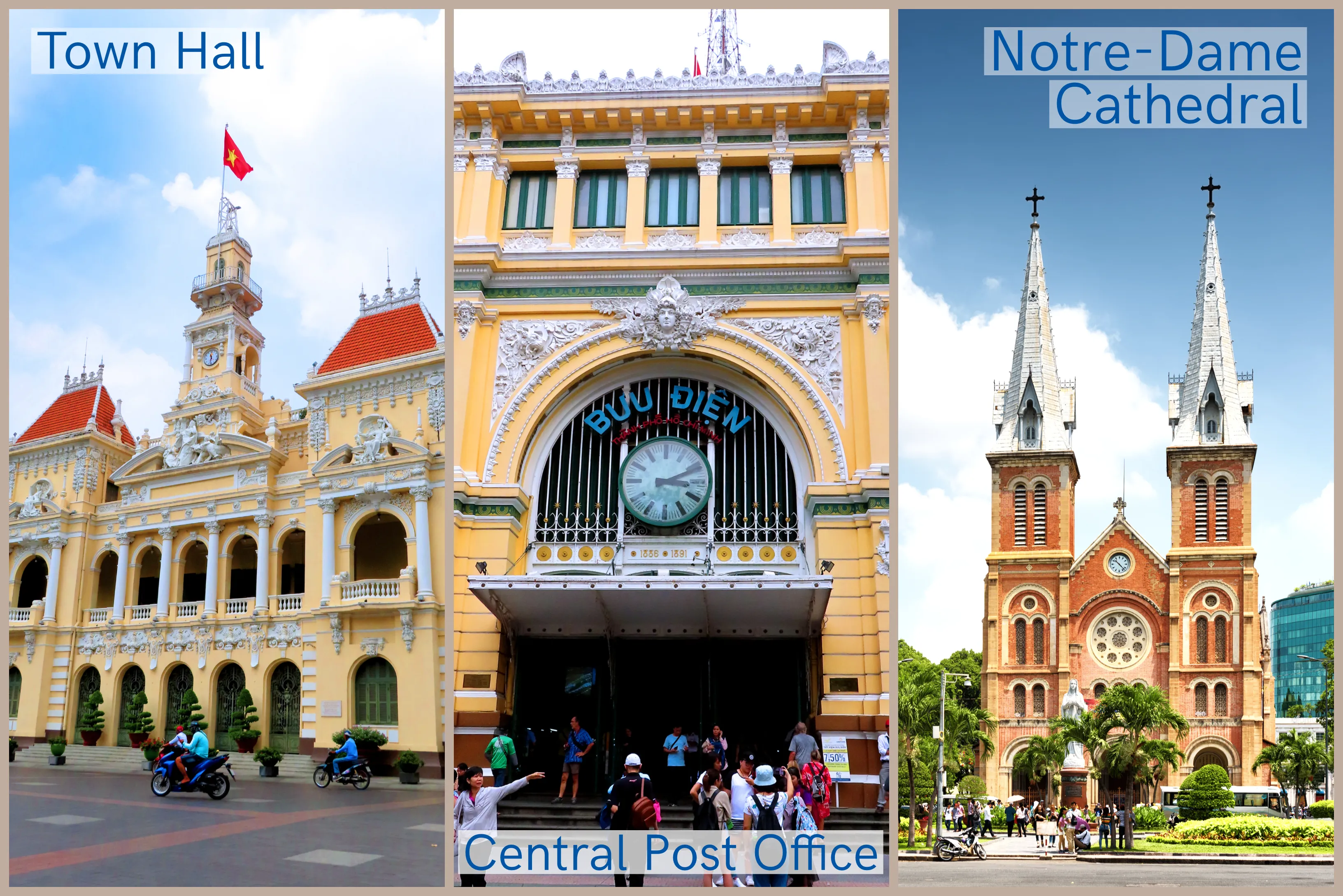

7am. Ho Chi Minh City is waking up to the sound of horns. At Tan Son Nhat International Airport, the biggest in Vietnam, a coach is waiting for the Mekong river cruise passengers to take them to the heart of this metropolis buzzing with a population of 13 million. Along burning hot roads, it is steering through the crowded city and its countless “Xe May”, flocks of noisy motorcycles zooming along carrying entire families, animals of all kinds and all sorts of unexpected loads. A never-ending stream forming an impressive urban choreography, where everything is a matter of inches. In this constantly moving hive, where traffic lights are purely ornamental, brave pedestrians must follow certain unusual rules, as explained to us by Tiêp, our particularly relaxed and beaming guide: “always walk across an avenue carefully but confidently, and never stop or slow down, vehicles will avoid you.”
Just like 30 million Vietnamese, his surname is Nguyen, which is how the last imperial dynasty was called. He speaks the language of a country he has never visited, which is France. Going to District 1 is a must, away from the humdrum, to travel back in time and walk down memory lane, when Ho Chi Minh City was still called Saigon, the capital of the Cochinchina protectorate from the middle of the 19th Century. In this charmingly old-fashioned looking area, the memory of the colonial past of what was once known as "the Pearl of the East" lives on. It is characterized by a unique way of life carrying the sweet scent of indolence, the languidness of opium, witnesses of the time when the long and elegant Catinat street (today called “Dong Khoi”, which means “General Insurrection street” in Vietnamese) was the beating pulse of a city, which was like a “little Paris”.
What is left of the French presence, which ended in 1954, are wonderful buildings, like the Notre-Dame Cathedral with its orange bricks, the Central Post Office designed by Gustave Eiffel, the Town Hall with its pastel yellow facade, the majestic Opera and its granite floors, the Blanchard de la Brosse pavillon (now home to the Museum of Vietnamese History), the residence of the Indochina Council of Commerce (today the French international school “Lycée Français International Marguerite Duras”) and the legendary Continental hotel, a sumptuous building where the most prestigious people have stayed, including the French writer and politician André Malraux and the actress Catherine Deneuve. Although the imposing statue of uncle Ho, dominating a square surrounded by Plumeria trees, is a reminder of the fact that the country gained its independence following two wars, many people still call the city Saigon and use words directly derived from the French language, including “Ca Phe” (for “café” in French), “So Co La” (for “Chocolat” in French), “Giam Bong” (for “jambon” in French) and “Mang To” (for “manger” in French) .
In Hô Chi Minh City, a new metro line is to open in 2 years, as is the case every two years. In the meantime, in order to go to Cholon, a former suburb absorbed by sprawling urbanisation, the coach must go through little streets that never sleep, surrounded by motorcycles with drivers wearing a helmet and gloves. “Women, especially, cover up as much as possible to protect themselves from the sun, because for them, clear skin is a major sign of beauty”, explains Tiep. We are lucky that Binh Tay market is shaded. Here, like in the rest of District 5, the population is mostly Vietnamese of Chinese origin, the Hoa, the absolute masters of trade. Venturing in this busy groups of shops promises to be a great and colourful adventure, a mixture of perfumes and flavours.


Binh Tay is palpitating and vibrant, and overflowing from the covered area onto the pavement, full of merchants knelt on the floor in front of their stalls spread out in front of them on the floor. In Cholon, a great bazaar, noisy, and lively, where one can find just anything for just a few dongs, the local currency. From fabric to spices, from hats to Buddhas, dried seahorse to aniseed, exotic fruit to swallow nests, goldfish, to fighting cockerels, not forgetting a wide range of types of rice (‘ST 24’, a type of white, aromatic long-grain rice, was crowned world champion this year in the Philippines), flavoursome soup with Nuoc-mam and pork loins, starfish, and snake alcohol - highly sought-after for its aphrodisiac properties.

In this busy Chinatown, a number of sacred sites can be found, like the wonderful Taoist Thien Hau Temple "Pagoda of the Lady Thien Hau", the most ancient city (1760), dedicated to Thien Hau, the protector of sailors. Two lion statues, one male and one female, guard the entrance ensuring no evil spirits can enter, while in front of the pagoda two young women are selling live birds, to be freed as a gift to the Gods during prayers. Suspended spirals of incense carrying wishes are burning away above the statues carved in precious wood, an invitation to prayer, to internal peace and serenity. Far away from the exuberant metropolis, the swarms of Xe May at sunset put on a fantastic light show. The time has come to return to the Indochine II lien, our ship moored in the heart of the city. On the Saigon River, the purple shades of the long barges reflect on the water. It is 7pm, and in Ho Chi Minh City where time never stops, night is falling.
Written by Thierry Hubac